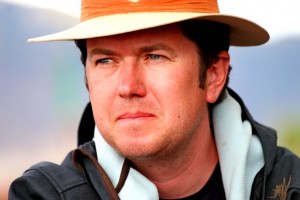On the Sources of the Rimé Movement
Along with Dr. Marc-Henri Deroche, we will present a three-day seminar on the Rimé movement, sparked in eastern Tibet during the 19th century by Jamgon Kongtrul and associates, but with deep roots in the Tibetan tradition.
August 15 to 17, 2014
Université Rimay
Domaine d’Avalaon
France
Presentations during the seminar include,
Kongtrul’s Rimé Vision and TBRC’s Organization of Tibetan Knowledge
The roots of the Rimé project undertaken by Jamgon Kongtrul (1813-1899) and Jamyang Khyentse Wangpo (1820-1890) run deep in the Tibetan historical consciousness, and have come to bear fruit in the digital age. Citing resonances for the Rimé sentiment among early Tibetan authors, and precedents for the preservation of the Tibetan textual tradition, we’ll consider how these historic trends shaped the mission of E. Gene Smith and the organization of Tibetan knowledge in the TBRC Library. In particular, we’ll look at our ongoing work at TBRC to preserve and model the encyclopedic knowledge of the Tibetan literary tradition, including the mapping of folk regions, tulku successions, and lineage transmissions—all based on Kongtrul’s vision.
Visualizing Early Shangpa Lineage Networks
Looking at early records of Shangpa Kagyu transmissions in the TBRC lineage module, we will trace the twists and turns of the Shangpa’s entangled history from the time of Khyungpo Neljorpa (1050-1127) to its later assimilation into mainstream Buddhist traditions with virtually no institutionalized presence in Tibet. This will enable us for the first time to visualize the early Shangpa lineage networks of esoteric transmission. In so doing, we will see a recompilation of knowledge about the early Shangpa in Tibet, untangling knots that have come to inhibit a clear historical vision of this Buddhist tradition.
The Jonang Presence in Eastern Tibet
Until recently, the Jonangpa were thought to be extinct. Though scholarship has shed some light on the early history of the Jonangpa in central Tibet during their formative period, and it is well known that the tradition thrived until its downfall in the mid-seventeenth century, little attention has been given to the survival of the Jonang transmissions from Taranatha (1575-1635) onwards. We will narrate the history of the Jonang presence in the Amdo region of eastern Tibet, based on a survey of Jonang sites and reflections from living in a Jonang monastery, to describe the continuity of the Jonang tradition up to the present.
PDF of the seminar flyer, Séminaire Rimay 2014.
The Université Rimay site page for the seminar.
